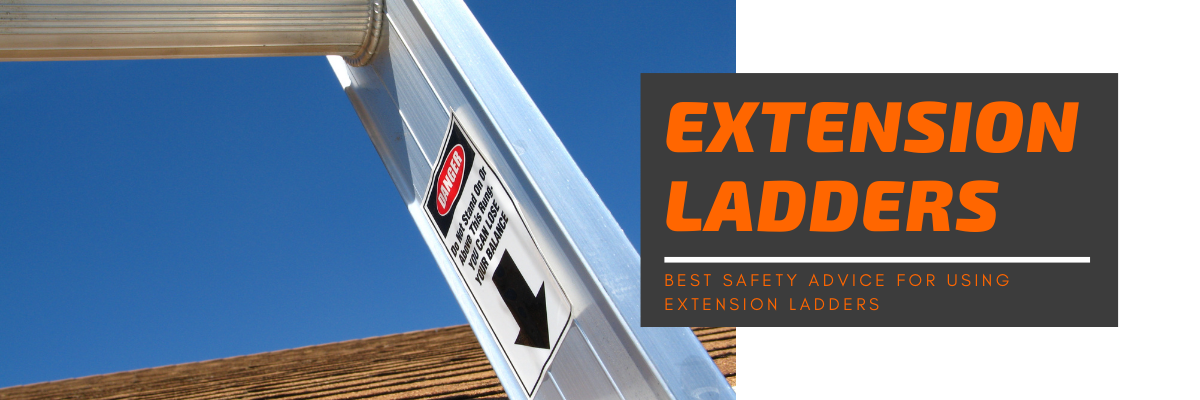When construction or DIY is carried out at height in residential, industrial and commercial environments, extension ladders are important items that are often required, but like any equipment used to operate at height, if they are not set up and used properly, they can be dangerous.
This article will give you a run down about extension ladders and include some safety tips to keep you safe.
View our range of extension ladders here
Back to basics: What is an extension ladder?
A ladder that consists of two or more parts that can extend and nest within each other is an extension ladder. For example, the three sections on a triple extension ladder can be slid together into one section for easy storage.
One segment is elevated above the other when in use, essentially doubling or tripling the attainable height of the ladder. This is done by an integrated clip device that locks together the parts of the ladder until it is lifted.
Now you know what an extension ladder is and how it works let us share some safety tips with you.
Rules for Safe Use
Inspecting Your Extension Ladder: Pre-checks
Before using an extension ladder, or any ladder for that matter it’s important to perform an inspection to check the product is safe to use and hasn’t been knocked or damaged in transport.
Book a ladder inspection today with one of our ladder experts
You should check many components of your extension ladder including the stiles, feet, rungs and locking bars, check for damages, dents, bends and erosion on all components of the ladder. If any components or parts are missing or overly worn, take them out of service.
It’s recommended by the HSE a ladder should be checked in more detail once every 3-6 months. Our Ladder Log Inspection System can help make this process a little easier.
The correct ladder angle & setup advice.
Only position an extension ladder on a surface that is dry and level, if the ladder isn’t level, the likelihood of a fall is significantly increased, the use of a simple accessory such as the Laddermat can help with uneven surfaces.
The ladder should be at a 75-degree angle. Setting the correct angle is critical, If the angle is too steep, there's a chance the ladder could tip over backwards. Too much of an angle will lead to the ladder bending or falling out of position.
When setting up you should also ensure you do not rest your ladder against weaker upper surfaces such as plastic guttering and window ledges. You should also try and tie in your extension ladder should the structure allow.
Take part in our Ladder Association accredited training to learn all out how to inspect and safely use a ladder.
Selecting the correct equipment for the job: Overreaching, Material & Height
Selecting the right equipment for the job is essential for safety. One of the first things to take into consideration is the material of the ladder and where you are working. For example, if electricity is present or if working around power lines never use an aluminium ladder.
Selecting the correct height for the ladder is also very important. When using an extension ladder you should not climb further than the fourth rung from the top, this will cause a heavier weight on top of the ladder and increase the chance of the ladder falling from underneath you. Another reason that height is vital to get right is when in use you should not overreach, overreaching is another major cause of falls from height.
Contact on the ladder when in use
When using your extension ladder you should keep three points of touch at all times, e.g. two feet and one hand, while operating on an extension ladder. When you are stood on the extension ladder and working you should ensure your feet are on the same rung and reasonable, non-slip footwear is worn. Dirty footwear can also cause slipping.
Accessories are key
When using an extension ladder there are many accessories that can help you stay safe and secure. We always recommend any extension ladder users to have a stand-off. A ladder stand-off allows the ladder to safely stand further away from the wall and give the user a better angle for jobs like cleaning gutters.
At the bottom of the extension ladder, we’ve already discussed how to deal with uneven ground, if working on wet or icy surfaces the Laddermat is a simple design to stop slipping when working at height.
Further Information
If you want to learn more about how to safely use ladders and receive a Ladder Association accredited certification and card to prove you are competent when using a ladder then take a look at our working at height training courses or give one of our ladder experts a call on 01204 590 232.

